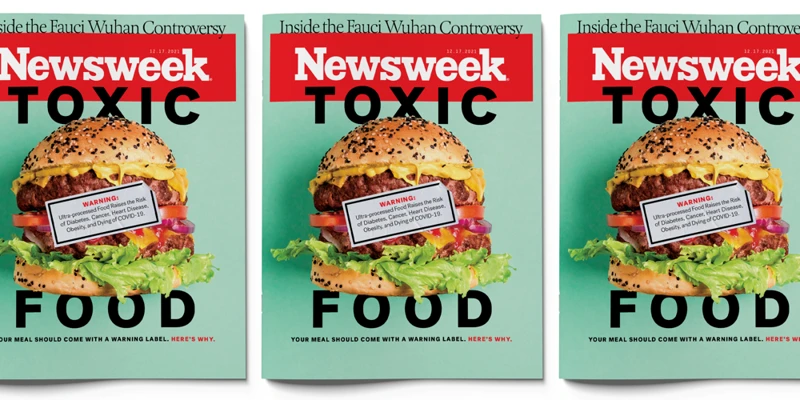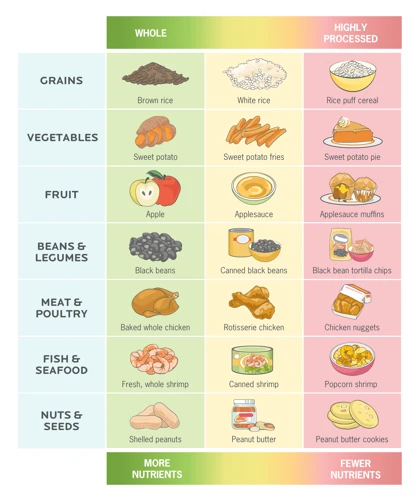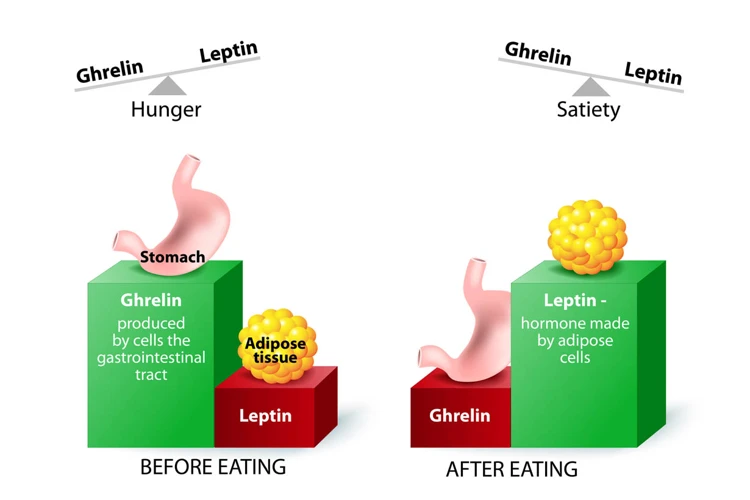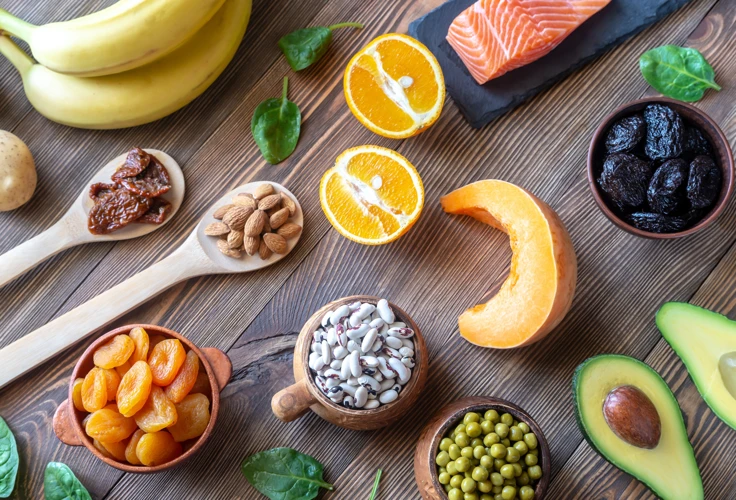Introduction

When it comes to managing our health and wellness, our dietary choices play a crucial role. One of the most fundamental decisions we make about food is whether to consume whole foods or processed foods. Whole foods, as the name suggests, refer to foods in their natural state, without any modification, while processed foods are altered in some way through cooking, extraction, packaging, or other forms of manufacturing. While both types of food have a place in our diet, it is essential to understand the differences between the two and how they can affect our hunger, cravings, and overall health. In this article, we will delve into what constitutes whole and processed foods, the nutritional differences between them, and how they impact our bodies in distinct ways. We will also provide tips for making more informed choices and recipe ideas for incorporating whole foods into your diet.
What are Whole and Processed Foods?
Whole foods are foods that are not processed or refined, and are in their natural state. They are typically nutrient-dense, meaning they provide a high level of essential vitamins, minerals, and other beneficial compounds that our bodies need. Whole foods can include:
| Fruits and Vegetables | Whole Grains | Lean Proteins | Nuts and Seeds | Legumes |
|---|---|---|---|---|
| Fresh or frozen fruits and vegetables | Whole-grain bread, quinoa, brown rice | Grilled chicken breast, fish, tofu | Almonds, cashews, chia seeds | Black beans, lentils, chickpeas |
Processed foods are foods that have been altered from their original state or have had ingredients added to them. They can sometimes be stripped of their natural nutrients during processing, or have harmful ingredients added like sweeteners, salt, or preservatives. Processed foods can include:
| Canned Foods | Frozen Foods | Baked Goods | Snacks | Soft Drinks |
|---|---|---|---|---|
| Canned soups, fruits, and vegetables | Frozen pizza, fries, and entrees | Pastries, cookies, and cakes | Chips, candy, and crackers | Sodas and energy drinks |
It’s important to note that not all processed foods are necessarily unhealthy, and some can still be a part of a balanced diet. However, it’s generally recommended to prioritize whole, nutrient-dense foods whenever possible.
Whole Foods vs. Processed Foods

When it comes to choosing what to eat, the options can be overwhelming. With so many foods to choose from, it can be confusing to determine which options are healthy and which are not. Two types of foods that are often discussed are whole foods and processed foods. Both of these categories have distinct differences in their nutritional content, sugar, salt, and fat content. Understanding these differences is essential in making healthy food choices that can positively impact our hunger and cravings. Let’s explore some of these differences in detail.
Nutritional Content
One of the major differences between whole foods and processed foods is the nutritional content they offer. Whole foods are minimally processed and provide a wide array of nutrients that are essential for good health. Meanwhile, processed foods often contain added sugar, salt, and fat, but lack essential nutrients.
To understand the difference in nutritional content, let’s take a look at the following table:
| Food | Calories | Protein (g) | Fat (g) | Carbohydrates (g) | Fiber (g) | Vitamins and Minerals |
|---|---|---|---|---|---|---|
| Apple (whole) | 95 | 0.5 | 0.3 | 25 | 4.4 | Vitamin C, potassium |
| Apple Sauce (processed) | 105 | 0.1 | 0.2 | 28 | 1.4 | Vitamin C, potassium (lower in concentration) |
| Whole Wheat Bread (whole) | 110 | 4 | 1 | 22 | 3 | Fiber, B vitamins |
| White Bread (processed) | 80 | 2 | 0.8 | 14 | 0.5 | Few to little vitamins and minerals |
As demonstrated in the table, whole foods generally offer more nutrients than their processed counterparts. Apples, for example, are a great source of fiber, vitamin C, and potassium. However, when apples are processed into apple sauce, they lose some of their fiber and other nutrients.
Similarly, whole wheat bread contains more fiber and a variety of B vitamins compared to white bread, which has little nutritional value.
It’s important to note that not all processed foods are devoid of nutrients, and some may even be fortified with vitamins and minerals. Nonetheless, whole foods remain the better choice for a nutrient-dense diet.
Sugar, Salt and Fat Content
One key factor that differentiates whole and processed foods is the sugar, salt and fat content. Whole foods tend to be much lower in these areas, whereas processed foods are often loaded with them to enhance flavor and increase shelf life.
Processed foods typically contain high amounts of added sugars, which can lead to various health issues such as weight gain, diabetes and heart disease. Additionally, consuming too much salt can lead to high blood pressure, kidney dysfunction and other complications. Processed foods are also high in unhealthy fats, such as trans fats, which can contribute to heart disease.
On the other hand, whole foods are naturally lower in sugar, salt and fat. They contain more vitamins, minerals, antioxidants and other beneficial nutrients that are essential for overall health. For example, fruits and vegetables contain natural sugars, but they also provide fiber, water and important nutrients that help our bodies function optimally.
By choosing whole foods over processed ones, you can significantly reduce your intake of added sugars, salt and unhealthy fats, which can greatly improve your health and wellbeing in the long-run.
How Whole Foods help Manage Hunger

When it comes to managing hunger, choosing the right foods can make all the difference. Whole foods, which are minimally processed and as close to their natural form as possible, are an excellent choice for satiety and nutrition. These foods are packed with fiber, vitamins, and minerals that can help promote feelings of fullness and satisfaction. In this section, we’ll discuss the specific ways that whole foods can help manage hunger and keep cravings at bay.
Fiber and Satiety
Fiber is an important component of whole foods that contributes to satiety, or the feeling of fullness after a meal. Processed foods, on the other hand, are often lacking in fiber due to the removal of important parts of the food.
Fiber in Whole Foods: Whole foods such as fruits, vegetables, whole grains, and legumes are high in fiber. Fiber is found in the skins, seeds, and pulp of plants, which are often removed in the processing of foods. For example, a whole apple contains fiber in its skin, but when processed into applesauce, the skin is often removed and the fiber content is reduced.
Satiety: Fiber is important for satiety because it slows down the digestive process, helping you feel full for longer periods of time. Whole foods are typically lower in calories than processed foods, but their higher fiber content can make them more filling and satisfying.
To illustrate the difference in fiber content between whole and processed foods, the following table shows some examples:
| Whole Foods | Process Foods |
|---|---|
| 1 cup of cooked quinoa: 5 grams of fiber | 1 cup of instant white rice: 0 grams of fiber |
| 1 medium apple: 4 grams of fiber | 1/2 cup of applesauce: 1 gram of fiber |
| 1 cup of cooked lentils: 15 grams of fiber | 1 cup of canned lentil soup: 6 grams of fiber |
Incorporating more fiber-rich whole foods into your diet can help promote satiety and prevent overeating, leading to better hunger management.
Nutrient Density
Nutrient density is a key characteristic of whole foods. This refers to the amount of nutrients per calorie in a food. Whole foods are typically more nutrient-dense than their processed counterparts. In other words, whole foods provide more nutrition and fewer empty calories. Vitamins, minerals, fiber, and antioxidants are all examples of nutrients that contribute to the nutrient density of whole foods.
Fresh fruits and vegetables are some of the most nutrient-dense foods available. They are naturally low in calories but high in vitamins and minerals. Dark, leafy greens like spinach and kale are particularly nutrient-dense, containing high levels of vitamins A, C, and K, as well as calcium and iron.
Whole grains are another great source of nutrients, including fiber, B vitamins, and trace minerals like magnesium and chromium. When grains are refined or processed, however, many of these nutrients are lost. Choosing whole grain pasta, breads, and cereals over their refined counterparts is an easy way to boost your nutrient intake.
Protein-rich foods like beans, lentils, and nuts are also very nutrient-dense. These foods provide not only protein, but also fiber, vitamins, and minerals like iron, magnesium, and zinc. Salmon and other fatty fish are another great source of nutrients, including omega-3 fatty acids, which are important for heart and brain health.
By choosing nutrient-dense whole foods over processed foods, you can help ensure that your body is getting the vitamins, minerals, and other nutrients that it needs to function properly.
How Processed Foods Contribute to Cravings

When it comes to processed foods, it’s hard to resist their convenience and addictive taste. However, the impact they can have on our bodies can be detrimental. Processed foods can contribute to intense and persistent cravings that are hard to satisfy, leaving us wanting more. The science behind this goes beyond simple taste buds and pleasure centers in the brain. In this section, we will delve into the various ways that processed foods contribute to cravings and what you can do to overcome them.
Additives and Flavor Enhancers
Processed foods are often loaded with additives and flavor enhancers such as monosodium glutamate (MSG), high fructose corn syrup (HFCS), and artificial colors and flavors. These additives are not only used for taste, but also to extend shelf life and improve texture. While they may make the food taste better, they can have negative effects on our health.
One of the most controversial additives is MSG, which is commonly found in savory processed foods such as chips and instant noodles. MSG has been associated with symptoms such as headaches, nausea, and sweating, which is commonly referred to as “Chinese restaurant syndrome.” While not everyone is sensitive to MSG, it has been shown to affect certain individuals negatively.
Another common additive is HFCS, which is found in many sweetened processed foods such as soda and candy. HFCS has been linked to obesity and other health issues, as it can lead to overconsumption due to its high sugar content.
Artificial colors and flavors are also used to enhance the appearance and taste of processed foods. While they may make the food look and taste better, they offer no nutritional value and may even be harmful. Some artificial colors and flavors have been linked to hyperactivity in children and other health issues.
It’s important to be aware of these additives and flavor enhancers when choosing processed foods. It’s also a good idea to try to limit or avoid them altogether and opt for whole foods instead. By choosing whole foods, we can avoid the negative effects of additives and flavor enhancers and improve our overall health.
Sugar, Salt, and Fat Addiction
One of the primary ways that processed foods contribute to cravings is through their high content of sugar, salt, and fat. When we consume processed foods, our brain experiences a rush of dopamine – the “pleasure chemical” – which can create a powerful feeling of reward and satisfaction. Over time, this can lead to addiction-like behaviors, as our brains begin to associate the consumption of these foods with positive emotions and feelings.
It’s important to note that not all types of sugar, salt, and fat are created equal. Processed foods often contain refined sugars, which are rapidly absorbed by the body and can lead to spikes in blood sugar levels, followed by crashes that can leave us feeling tired and lethargic. Additionally, many processed foods contain high amounts of sodium, which can contribute to hypertension and other health issues if consumed in excess. Finally, many processed foods are high in unhealthy saturated and trans fats, which have been linked to an increased risk of heart disease and other chronic health conditions.
To break the cycle of sugar, salt, and fat addiction, it’s important to make a conscious effort to reduce our consumption of processed foods and instead focus on whole, unprocessed options. This may involve gradually reducing the amount of added sugars, salts, and unhealthy fats in our diets, while increasing our intake of nutrient-dense whole foods like fruits, vegetables, whole grains, and lean proteins. With time and patience, we can retrain our brains to crave healthier foods and break free from the cycle of addiction that processed foods can create.
Tips for Choosing Whole Foods

When it comes to making healthier food choices, switching to whole foods is a great place to start. But with so many options available at the grocery store, it can be overwhelming to figure out which foods are truly “whole.” To help you navigate the aisles, here are some tips for choosing real, unprocessed foods that will nourish your body and keep you feeling satisfied. By making simple changes to your shopping habits, you can enjoy all the benefits of a whole foods diet without the stress.
Shop the Perimeter
One of the best ways to ensure that you are buying whole foods is to shop the perimeter of the grocery store. This is because the outer aisles typically contain the fresh produce, meat and dairy sections, while the inner aisles often feature processed and packaged goods. By sticking to the perimeter, you can limit your exposure to unhealthy options.
When choosing produce, look for a variety of different colors to ensure that you are getting a range of nutrients. Try to buy organic when possible to reduce your exposure to pesticides and other harmful chemicals. When it comes to meat, look for lean cuts such as chicken breast, turkey, or fish. Grass-fed beef is also a good option if you eat red meat. This type of beef is higher in omega-3 fatty acids and other nutrients than grain-fed beef.
In the dairy section, opt for plain, unsweetened options such as plain Greek yogurt or cottage cheese. These items are high in protein and free from added sugars. For those who are lactose intolerant or vegan, there are many non-dairy options available, such as almond, soy or coconut milk.
By shopping the perimeter, you are more likely to find whole foods that are nutrient-dense and free from additives and preservatives. Try to make it a habit to stick to the outer edges of the grocery store, and avoid the temptation of processed snacks and sweets that are often found in the inner aisles.
Read Labels
When it comes to choosing whole foods, reading labels is crucial. While whole foods typically have minimal to no packaging, processed foods often come in eye-catching packaging that can be deceiving. The front of the package may boast bold claims like “low fat” or “all-natural,” but it’s important to turn the package over and read the label to truly understand what you’re consuming.
One of the first things to look for on a label is the ingredients list. Make sure the first ingredient listed is a whole food. If it’s not, the product may be heavily processed and lacking in nutrients. Additionally, take a look at the sugar, salt, and fat content. While whole foods contain natural sugars and healthy fats, processed foods often have added sugar, salt, and unhealthy fats. Choose products with lower amounts of added sugar, salt, and unhealthy fats.
Another thing to consider when reading labels is the serving size. Many processed foods come in large portions that may seem like a good deal but can contribute to overeating and weight gain. Pay attention to the serving size and adjust your portions accordingly.
Lastly, be cautious of any unfamiliar ingredients on the label. Processed foods often contain additives, preservatives, and artificial flavors/colors that can be harmful to your health. Choose products with simple, recognizable ingredients.
By taking the time to read labels, you can make informed choices and avoid consuming processed foods that can lead to hunger and cravings.
Buy in Season
One important tip for choosing whole foods is to buy in season. Seasonal produce not only tastes better, but it’s also more affordable and nutritious. When fruits and vegetables are in season, they are abundant and readily available, which means they don’t have to travel far to reach your grocery store. This not only reduces the environmental impact of transportation but also means the produce is fresher and contains more nutrients.
Additionally, buying in season also supports local farmers and helps the local economy. Farmers markets and local produce stands are great places to find fresh, seasonal produce. You can also check with your grocery store to see if they offer any locally sourced produce.
To make it easier to know what’s in season, you can refer to a seasonal produce chart. Here is an example of what produce is typically in season in the United States during different months:
| Month | Produce |
|---|---|
| January | Kale, Collard Greens, Grapefruit, Oranges |
| February | Sweet Potatoes, Avocado, Spinach, Broccoli |
| March | Asparagus, Artichokes, Radishes, Strawberries |
| April | Peas, Rhubarb, Fennel, Arugula |
| May | Carrots, Beets, Raspberries, Spring Onions |
| June | Tomatoes, Zucchini, Cucumbers, Peaches |
| July | Corn, Cherries, Blueberries, Watermelon |
| August | Eggplant, Bell Peppers, Grapes, Plums |
| September | Squash, Apples, Pears, Pumpkins |
| October | Cauliflower, Brussels Sprouts, Cranberries, Sweet Potatoes |
| November | Broccoli, Carrots, Kale, Parsnips |
| December | Beets, Collard Greens, Citrus Fruits, Turnips |
Keeping track of what’s in season can help you plan meals and make grocery shopping easier and more enjoyable. Plus, you’ll be able to enjoy a variety of fresh, healthy produce throughout the year.
Recipes Featuring Whole Foods
Are you looking for some delicious and healthy meal ideas that incorporate whole foods into your diet? Look no further! Our creative culinary team has curated a selection of satisfying and nutrient-packed recipes that highlight whole foods in their most delicious form. Whether you’re a smoothie bowl fanatic or a nacho lover, we have something for everyone. Get ready to tantalize your taste buds and nourish your body with our selection of wholesome recipes.
Green Smoothie Bowl
This delicious Green Smoothie Bowl is not only easy to make, but it’s also packed with essential nutrients that your body needs to thrive. Here is a simple recipe for you to try:
| Ingredients: | Instructions: |
| 1 banana | Blend the banana, spinach, and almond milk in a blender until smooth. |
| 1 cup spinach | Once smooth, pour the mixture into a bowl. |
| 1/2 cup almond milk | Top the smoothie bowl with your favorite toppings, such as sliced bananas, chopped nuts, and chia seeds. |
| Sliced bananas, chopped nuts, and chia seeds for toppings | Enjoy! |
The banana and spinach in this smoothie bowl provide plenty of fiber to keep you feeling full and satisfied, while the almond milk adds healthy fats and protein. Plus, the toppings add crunch and flavor, making this meal both satisfying and delicious. Give it a try for a quick and healthy breakfast or snack!
Loaded Sweet Potato Nachos
If you’re looking for a delicious and nutritious way to enjoy a classic game day snack, look no further than these Loaded Sweet Potato Nachos. Not only do they satisfy cravings for something crunchy and cheesy, they also provide a hit of fiber, vitamins, and antioxidants thanks to the sweet potato base.
To make these nachos, start with a base of thinly-sliced sweet potatoes. Bake them until they are crispy and golden brown, then top with shredded chicken, black beans, diced tomatoes, and sliced jalapenos. Finish with a generous sprinkle of shredded cheddar cheese and return to the oven until the cheese is melted and gooey.
What makes this recipe a winner for both taste and nutrition is the use of whole foods in every ingredient. Rather than relying on processed tortilla chips and pre-made nacho cheese sauce, these nachos are made with wholesome, unprocessed ingredients. The sweet potatoes are full of fiber and vitamin A, while the black beans add a boost of protein and iron. Sliced jalapenos provide a hit of spicy flavor without relying on artificial additives or flavor enhancers.
If you’re looking for a way to make these nachos even healthier, try:
- Using diced avocado instead of cheese for a dose of heart-healthy monounsaturated fats
- Subbing in plain Greek yogurt for the sour cream to boost the protein content of the recipe
- Adding chopped fresh cilantro or scallions on top for extra flavor and antioxidant power
Whatever toppings you choose, these Loaded Sweet Potato Nachos are sure to be a hit with the whole family. They’re perfect for game day or just a fun and flavorful dinner any night of the week.
Conclusion
In conclusion, making the decision to choose whole foods over processed foods can have a significant impact on your overall health and well-being. Whole foods are unprocessed or minimally processed and offer a wealth of nutritional benefits such as fiber, vitamins, and minerals. They are also less likely to contribute to cravings and overeating, making them an excellent choice for managing hunger and maintaining a healthy weight.
On the other hand, processed foods are often high in sugar, salt, fat, and additives that can lead to addiction and cravings. They are also typically lacking in essential nutrients that your body needs to function properly. While they may be convenient and affordable, the long-term effects on your health are not worth the short-term benefits.
When it comes to choosing whole foods, there are a few key tips to keep in mind. Shopping the perimeter of the grocery store, reading labels carefully, and buying in season can all help ensure that you are choosing the most nutritious whole foods available.
Furthermore, incorporating delicious and healthy whole food recipes into your diet can make the transition even easier. Try a green smoothie bowl or loaded sweet potato nachos for a satisfying meal that is both nutritious and delicious.
In the end, the decision to choose whole foods over processed foods is a simple one. By prioritizing your health and making a few easy changes to your diet, you can enjoy a lifetime of vitality and well-being. So next time you reach for that bag of chips or soda, take a moment to consider the impact on your body and choose a healthier option instead. Your body will thank you for it.
Frequently Asked Questions
What are some examples of whole foods?
Some examples of whole foods include fruits, vegetables, whole grains, nuts, and seeds.
What are some examples of processed foods?
Some examples of processed foods include chips, cookies, candy, and frozen meals.
What are the nutritional benefits of whole foods?
Whole foods are rich in essential vitamins, minerals, and fiber that help maintain optimal health and vitality.
How can processed foods affect my weight?
Processed foods are often high in empty calories and unhealthy ingredients that can lead to weight gain and other health problems.
Do processed foods contain more sugar, salt, and fat than whole foods?
Yes, processed foods often contain higher levels of refined sugar, salt, and unhealthy fats compared to whole foods.
What are some common additives found in processed foods?
Common additives found in processed foods include artificial flavors, colorings, and preservatives.
Can whole foods help reduce cravings?
Yes, whole foods that are high in fiber and nutrients can help stabilize blood sugar levels and reduce cravings for unhealthy foods.
What should I look for on food labels when choosing whole foods?
Look for foods that have no added sugars or artificial ingredients, and high levels of fiber, vitamins and minerals.
Are there any downsides to eating whole foods?
While there are no downsides to eating whole foods, it can sometimes be more expensive or time-consuming to prepare meals using fresh ingredients.
What are some easy and quick whole food meal options?
Quick and easy whole food meal options include green smoothies, salads, and roasted vegetables with whole grain pasta or quinoa.







